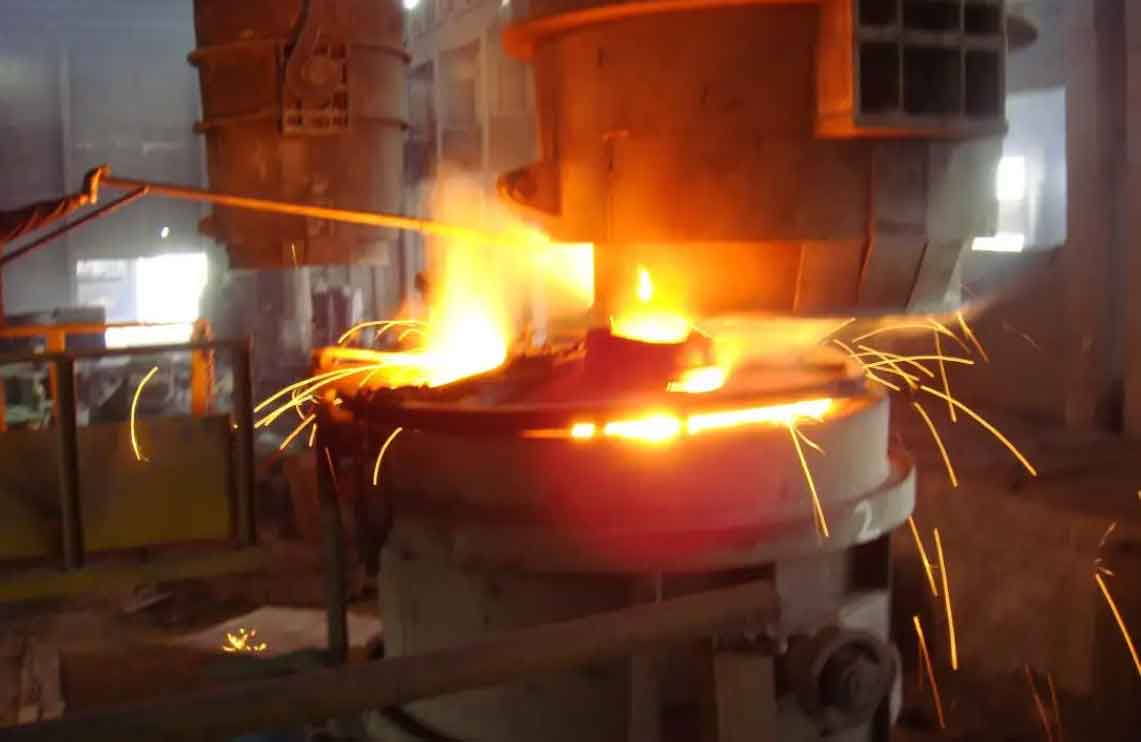The formation mechanism and influencing factors of hot crack casting defects are very complex. So far, there are three main theories: strength theory, which holds that the alloy has very low elongation and brittle fracture in the temperature range of solidus. The wider the brittle zone is, the longer the metal stays in the low plastic zone, and the easier it is to form hot crack casting defects. According to the liquid film theory, the tendency of hot crack casting defects during solidification is closely related to the liquid properties and thickness around the crystal at the end of crystallization. According to the formation success theory, the generation of hot crack casting defects should go through two stages: crack nucleation and development. The crack nucleation is easy to occur at the liquid phase collection part where the solid grains intersect.
① Low alloy carbon steel has a wide range of solidification and crystallization temperature. In the last solidified part, the liquid steel will be fed to the adjacent and first solidified part, but it cannot be supplemented by the liquid steel itself. At the same time, the last solidified part is subject to tensile stress, which is very easy to form the source of crack.
② For steel castings with complex structure, there are many hot spots in sand casting, the wall thickness of adjacent planes is different, and hot spots are formed at the intersection. During the transformation of sand casting from liquid metal to solid metal, due to the uneven temperature field, it can not be solidified at the same time or in sequence. All parts of sand casting cannot shrink at the same time. If the shrinkage of the last solidified part is blocked, hot crack casting defects will occur. Steel castings with thin wall, complex and uneven wall thickness are very prone to hot crack casting defects.
③ The characteristics of furan resin sand are easy to produce cracks. Resin sand has good fluidity, easy compaction, less resin addition and thin adhesive film coated on sand particles, so that the thermal expansion rate of sand core and sand mold will be higher than that of sodium silicate sand core (mold); After the molten steel is poured into the mold cavity, the resin sand is heated at high temperature, and the resin is carbonized and coked in a reducing atmosphere to form a hard coke skeleton, which can improve the thermal strength of the sand core (the compressive strength of the resin sand is 5 ~ 10 times that of the sodium silicate sand at 1000 ℃), which seriously hinders the retreat of the sand core (mold). The higher the content of furfuryl alcohol in furan resin (the lower the nitrogen content), the greater the tendency of hot crack casting defects of sand castings, because furfuryl alcohol increases the thermal decomposition temperature of resin and reduces the thermal decomposition rate of resin, thus reducing the collapsibility of sand mold or sand core, making sand mold or sand core more hinder the shrinkage of sand mold castings, resulting in the increase of hot crack casting defects of sand castings. When using furan resin sand process, the curing agents used are p-toluenesulfonic acid and dimethylbenzenesulfonic acid, which decomposes into H2S, S02, S03 and other gases when heated. These gases are easy to react with metals during solidification of sand castings to form FES and MNS. These sulfides are easy to form ternary eutectic (fe.fe3c.fes) in low carbon steel, and its melting point is low, only 975 ℃. At the initial stage of solidification of sand castings, Fe first forms crystal nucleus and grows up, Due to their low melting point, these sulfides are pushed around the primary grains and finally solidified at the dendrite boundary, which is easy to cause hot brittle points and form the origin of cracks. When the metal solidifies at high temperature, it will shrink, and the shrinkage is greatly resisted by the sand mold (core), resulting in stress and deformation of the sand mold casting; The addition of sulfur on the alloy surface reduces the ability to resist hot cracking. When the stress or deformation exceeds the crack strength limit of the alloy at this temperature, hot crack casting defects will be formed.

